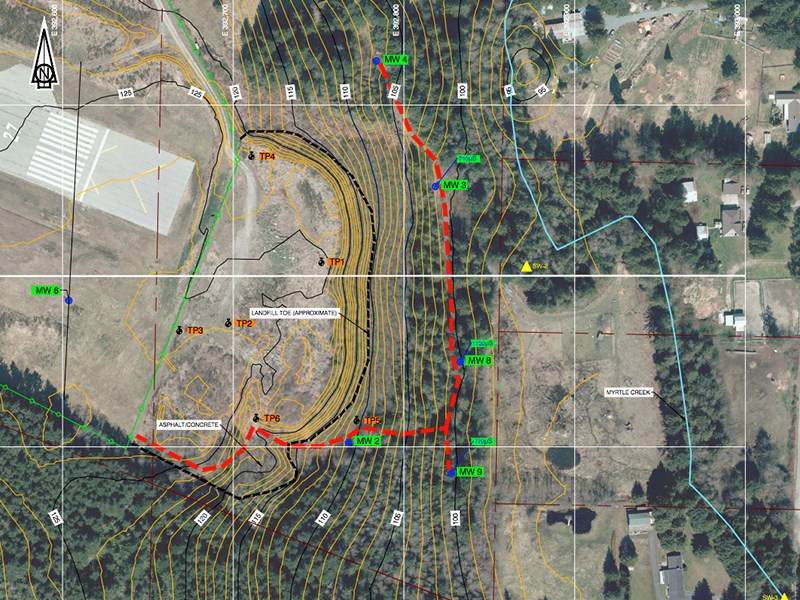Costs to City of Powell River for closing the Powell River Airport landfill site are estimated at between $1.8 and $2.2 million, according to the recently released closure report from Powell River Regional District.
The report, submitted to the local government in 2014 from a North Vancouver-based environmental consulting firm, is one part of the regional district’s updated solid-waste management plan that it will be looking to have approved by BC Ministry of Environment. The regional district began its process to update its solid-waste management plan in August. It is expected to be complete and submitted to the provincial government next summer.
According to regional district board chair Patrick Brabazon, the old plan, which was not approved by the provincial government, now requires updating.
Provincial law dictates that regional districts are responsible for preparing landfill closure plans for any site no longer in use. The company, or in this case city, that held the permit for the landfill is then responsible for its closure.
“This leaves the City of Powell River with a cleanup job,” said Brabazon. “It’s their dumpsite and they have to clean it up.”
Two landfills stand out in need of closure: one is the Marine Avenue incinerator site; the other is the airport landfill.
The east end of the airport was used as a landfill for incinerator bottom ash from 1971 to 1988 and after that for fill material, primarily soil from excavations. City garbage is also mixed into it.
Closing the airport landfill will entail either capping it with gravel and soil or a membrane system to contain the dumped materials.
According to the closure plan, in 1995 while repairing a broken culvert near the old Squatters Creek ravine dump near Duncan Street, city workers dug up and transported about 250 cubic metres of soil mixed with garbage to the airport site instead of the waste-transfer station. The closure plan estimates there is as much as 80,000 cubic metres of ash in the 180-metre-long and 20-metre-high landfill.
Between 1972 and the early 1990s, the Marine Avenue incinerator, an approximately 10-hectare site, was used for the operations of a pit burner, which took household, commercial and paper mill waste.
Earlier this year the regional district announced it had received $6 million to close the incinerator site, where it plans to build its resource-recovery centre.
While the waste incinerator and airport landfill sites operated with ministry permits, the ravine dump never had one. According to a report on the regional district’s existing solid-waste management system, concerns linger over the release of methane from the site.
According to the environment ministry, the airport landfill closure plan was received by the ministry last year.
City councillor CaroleAnn Leishman, who also sits on the regional board as a municipal director, said closing the site is something the city has been aware of for quite some time, however, this is the first it has seen of the regional district’s closure plan.
“We’re aware of it, but it’s not on the radar just yet,” said Leishman.
Brabazon explained that before handing the plan to the city, regional district staff had to work with the environment ministry during the past year to ensure that the airport closure plan met provincial requirements.
According to regional district manager of community services Mike Wall, once approved by the province, the plan is then handed to the city. When the city is ready to move forward with closing the site it will notify the provincial government and the environment ministry will respond with further requirements for the closure, including retaining a qualified professional to implement the closure based on the regional district’s plan.
“There’s no date set yet for dealing with that,” said Leishman. “We have to make a plan.”



